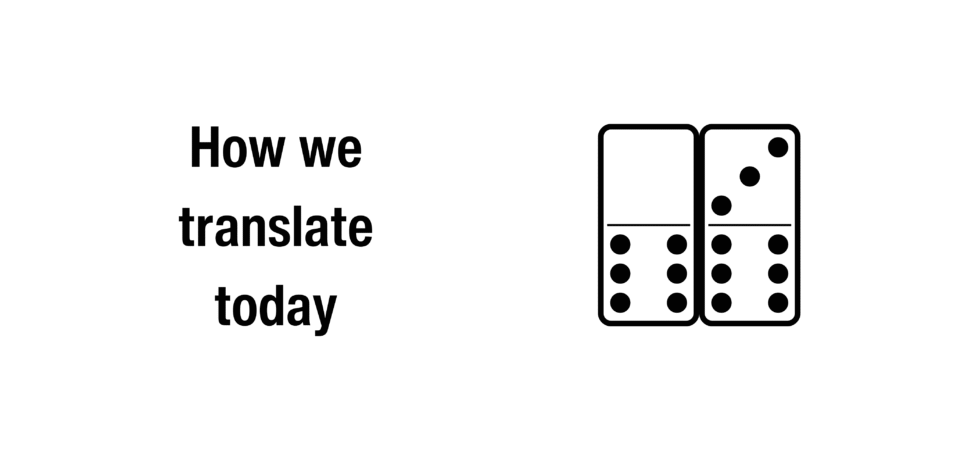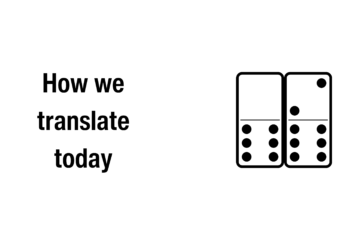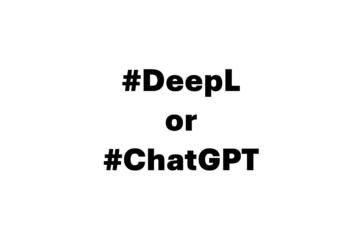Glossary or terminology database: the key differences for translations

When you work with a localisation provider, you’ll often hear the terms glossary and terminology database. At first glance, they might sound like two names for the same thing. But in practice, they serve different purposes, especially depending on whether you’re using human translators or machine translation (MT) systems. Understanding the differences between the two will help you make informed decisions and improve the quality and consistency of your content.
What is a terminology database?
A terminology database (sometimes also referred to as a termbase or a termbank) is usually a complex system. Besides the terms in different languages, it can also store rich metadata about each term: definition, approval status, context, usage examples, forbidden terms, domain, and even part of speech.
A terminology database is dynamic and multidimensional. You can track version history, usage across departments, or region-specific preferences. It’s a powerful tool for large organisations with complex content needs. Terminology databases require maintenance and can serve as a basis for a glossary by using filtering and the export feature in specialised terminology tools.
What is a glossary?
A glossary is a curated list of key terms and their approved translations. Most glossaries are built using 1:1 term pairing. Think of it as a simple spreadsheet with two or more columns: one for the source term, one for the target language equivalent. Each source term maps to exactly one approved translation.
Such a structure helps to avoid ambiguity. You don’t want a translator or a machine wondering whether “dashboard” should be translated as “Instrumententafel” or “Armaturenbrett” in German, especially if your company has chosen one over the other for consistency. If you’re localising your documentation across 12 languages, a glossary ensures that key terms, like “dashboard”, are translated consistently across every product version and language.
How a terminology database and glossary support human translation
For human translation, both glossaries and terminology databases are valuable. While they serve slightly different purposes, they both help translators make faster, more accurate, and more consistent choices, especially when working with specialised or branded content.
A glossary gives the translator a quick-reference list of approved terms. It’s useful for keeping language aligned with client expectations and company voice. For example, if a company always refers to its user-facing homepage as “Startseite” in German (and not “Homepage”), a glossary makes that clear from the start. This kind of clarity helps translators avoid second-guessing and unnecessary rework.
A terminology database, however, offers much more than just translations. It stores rich metadata – definitions, product categories, project relevance, even images. This additional context is incredibly valuable, especially in cases where a single term can have different meanings depending on where and how it’s used.
For example, a single term can have different equivalents in another language, depending on the project or domain within the company. When this kind of context tagging is available, a glossary can be extracted for a specific domain or department. In other words, instead of sending translators a long, potentially confusing list of terms, you can give them only the entries that are relevant to the project at hand. This feature reduces noise, accelerates decision-making, and significantly enhances translation quality.
Terminology databases can even include images or UI screenshots. If you’re translating the word “start” in an e-learning interface and lack context, seeing a screenshot can clarify whether it is used as a verb or a noun in the UI. A translator will avoid guesswork and translate all instances of this and potentially other buttons consistently as verbs or nouns.
In short, a glossary speeds up decisions by offering quick answers, while a terminology database guides those decisions with deeper context. They provide human translators with a toolkit that supports accuracy, saves time, and preserves the meaning and tone of your original content, regardless of its complexity or diversity.
A glossary and machine translation: a perfect match
There are various ways to integrate terminology into your machine translation system. To find out more, read our blog on the integration of glossaries into MT.
Unlike human translators, MT engines don’t always understand nuance and can’t rely on intuition or prior experience to resolve ambiguity. They generate output based on statistical patterns or neural predictions. That’s why glossary formatting for MT must follow strict positive 1:1 term pairing, where each source term should have only one approved target-language equivalent. Avoid including terms that can have multiple meanings (homonyms) or interchangeable terms (synonyms), as these can lead to confusion for both MT systems and human translators.
This format ensures that the engine applies the translation exactly as defined, without guessing. If you enter “account settings” as the source term and “Kontoeinstellungen” as the target, that’s the only translation the system will use whenever it encounters that phrase. If multiple translations are provided, the system may ignore them, always apply the first occurrence, or worse, apply one at random.
Another key consideration is term specificity. Glossary entries for MT should use precise, unambiguous terms. Don’t aim for a one-size-fits-all list. Tailor your terminology to your specific use case – your product, content type, or audience. General words like “system” or “service” are risky. If a term is too broad, the MT engine may apply the translation in the wrong context, resulting in awkward or even misleading output. Glossary terms should be narrowed to only those that are essential and have one clear meaning within the scope of your content.
That said, with the growing adoption of AI-enhanced MT, some of these limitations are becoming more flexible. Newer systems can take contextual information into account. If the system recognises the domain of the content (e.g., finance, healthcare, software), it can select the most suitable translation from a set of approved options. That’s where metadata in a terminology database comes in handy.
Still, even advanced systems perform best when the glossary is clean, specific, and consistently structured. A well-prepared glossary doesn’t just improve translation; it reduces post-editing effort and speeds up your entire content pipeline. If you’re already using DeepL as part of your localisation strategy and want to take it to the next level, get in touch with us to explore how a custom DeepL glossary can boost consistency and save valuable editing time.
How SwissGlobal can help you with your glossary or terminology database
Good terminology management isn’t just about language. It’s about clarity, trust, and protecting your brand voice across markets.
If you’re not already using a glossary or terminology database in your localisation strategy, now is the time to start. Whether in human translation or as an integration into your MT workflows, even a simple glossary can reduce translation errors, expedite delivery, and enhance the effectiveness of your content.
Want help building your glossary or setting up an MT-compatible format? Let’s talk. We can help you find the best setup for your specific goals.
You can choose between the following services:
-
glossary
terminology database
translation
translation services


